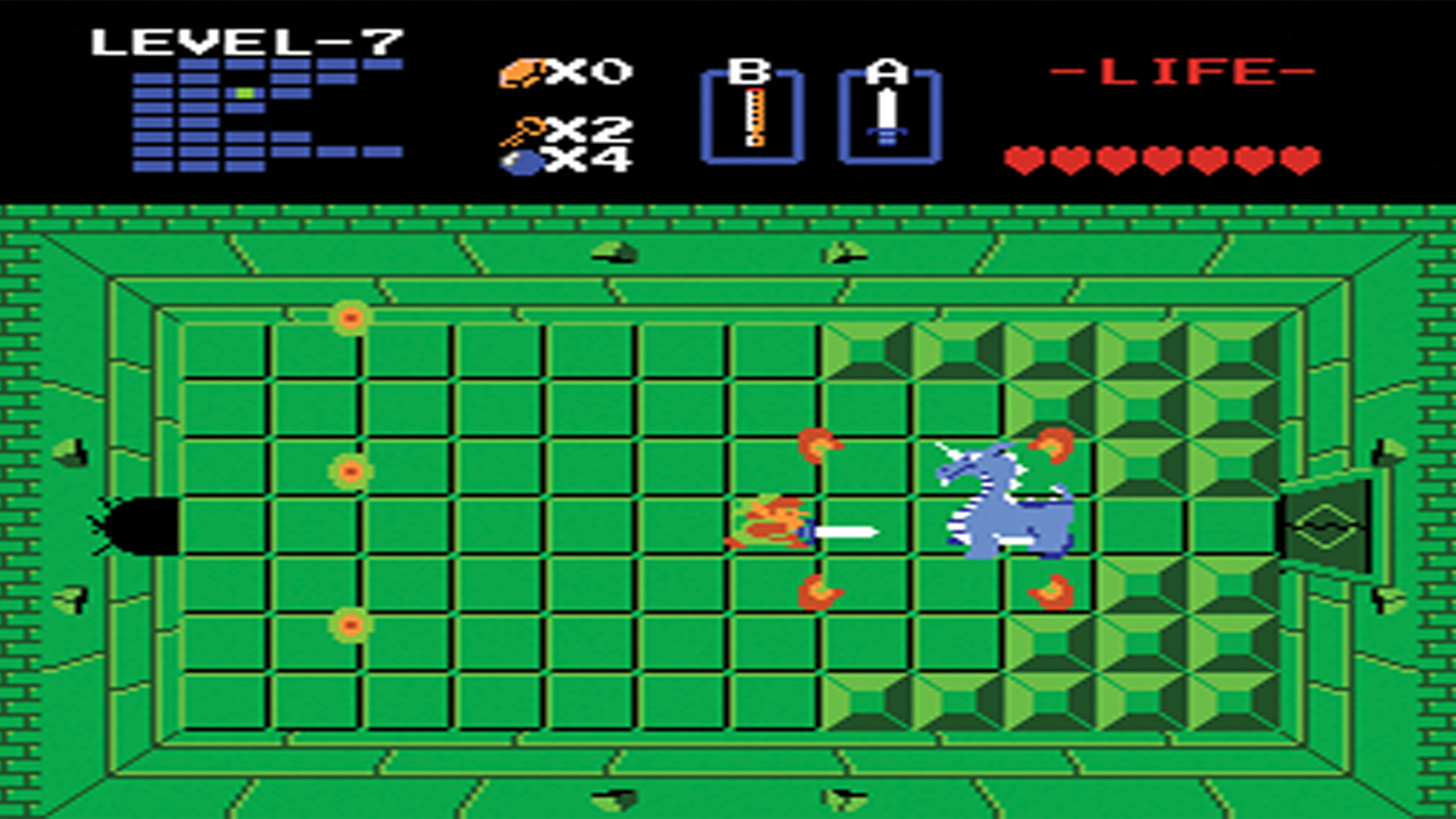
Here it is, the very best games of the '80s. Remembered as a period of wild experimentation, what you'll find on this ranking is some of the best retro games of all-time. From the sheer ingenuity of The Legend of Zelda to the unbridled scope of Elite, our pick of the 50 best games of the '80s reflect just how unbelievable the era was for the industry.
Some of these games are fun to play, even today, and some of them have been vastly surpassed in the intervening years by smoother, better-looking games that took what was there and improved. That's what games designers do. Our criteria here is not how do these games stack up against the games we make and play today. Our criteria is which games of the '80s do we owe the greatest debt to because they innovated so much at the time, and because they represent all that is best about original game design. So keep on reading to find our ranking of the best games of the '80s.
50. Raid On Bungeling Bay
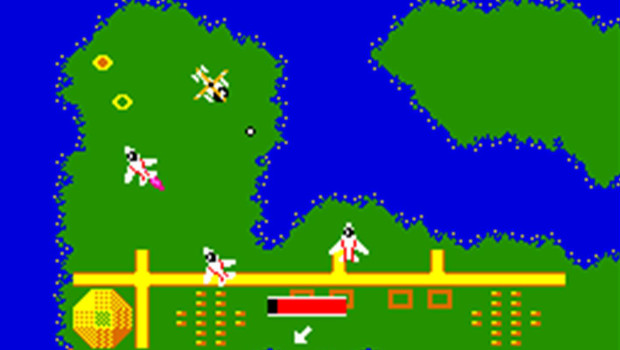
Developer: Will Wright
Released: 1984
This was the game that spurred its author Will Wright to become embroiled in all those Sim games. Although Wright's first commercial title, Raid On Bungeling Bay was an enormously ambitious creation. What initially appears to be a polished, but typically single-minded eight-way scrolling shoot-em-up, is actually something rather more subtle and devious, with players flying over enemy islands where the urban sprawl actually evolves, grows factories and dispatches ever-more-deadly military technology. That changing landscape concept, along with some of the map visuals, would later work their way into Sim City.
49. 3D Deathchase (1983)
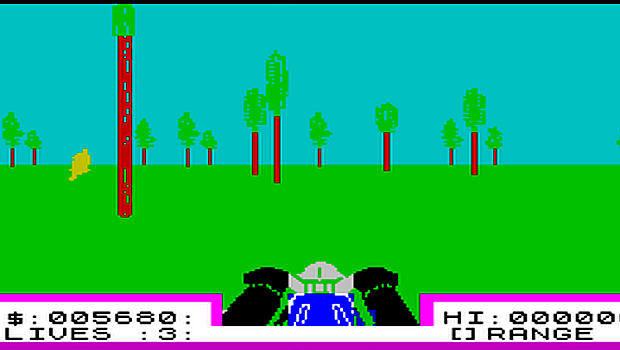
Developer: Mervyn Estcourt
Released: 1983
3D Deathchase is a reminder of just what could be achieved with a paltry 16K of memory back in the early days of the home computer. Lifting the speeder bike sequence wholesale from Return Of The Jedi, 3D Deathchase seemed almost comically single-minded even in an era of simple pleasures. Yet what it does, it does flawlessly, ratcheting up the challenge of bobbing and weaving through a forest while blasting at enemy bikes, tanks and helicopters, until either nerves or reflexes ultimately give out. Little wonder it remains so fondly remembered by UK gamers of a certain age, and why almost a decade after its release it was ranked as the best ZX Spectrum game of all time by Your Sinclair magazine.
48. M.U.L.E.
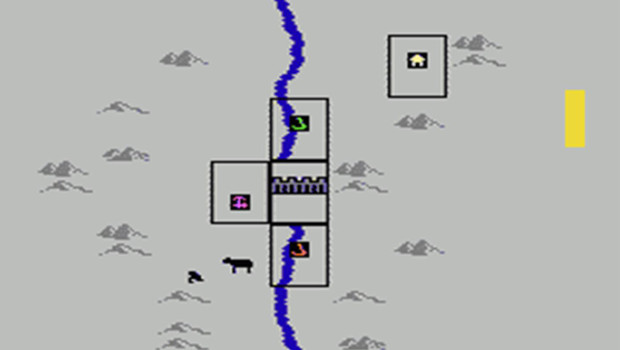
Developer: Ozark Softscape
Released: 1983
All but ignored at the time of its release, receiving little critical acclaim and selling poorly, despite the publishing power of Electronic Arts, M.U.L.E. is now rightfully acknowledged as one of the most groundbreaking video games of all time. Though an update of the age-old Kingdom formula at heart, M.U.LE.'s innovative single screen multiplayer mode and arcade-style take on resource harvesting and economic strategy helped create a game style that would ultimately lead to the Civilization series, Dune, Command & Conquer and countless other real-time strategy titles. Author Dan Bunten (later Dani Berry) died in 1998, before completing an online version of the game.
47. Impossible Mission
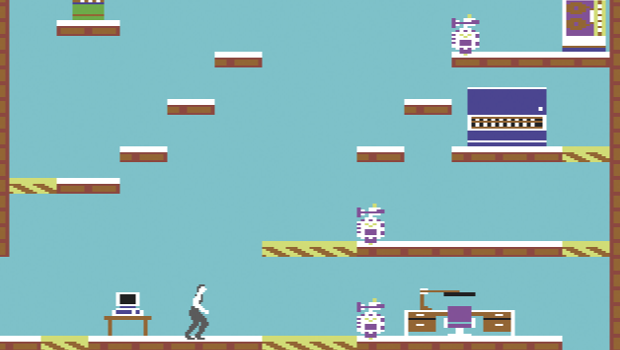
Developer: Epyx
Released: 1984
Impossible Mission was the game that introduced many C64 owners to voice synthesis for the very first time. "Stay a while, stay forever!", bellowed the player's unseen nemesis at the start of a heroic, against-the-clock battle across multiple screens populated with platforms, lifts and robots. Possibly even more sinister was the digitized scream that accompanied the many inevitable deaths that followed. One side effect of the somewhat cheeky title is that many gamers of a certain age still have trouble correctly naming a certain 1960 TV spy show (and the associated Tom Cruise blockbusters).
46. Scramble
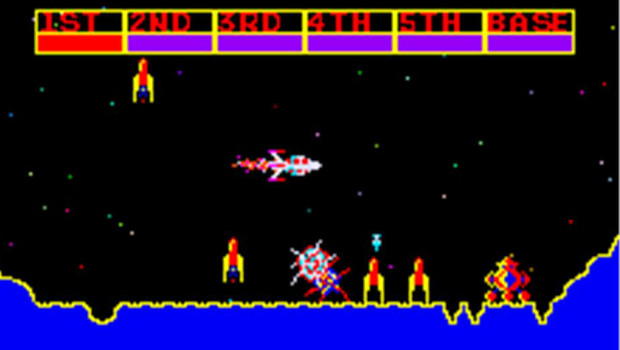
Developer: Konami
Released: 1981
Along with Space Invaders, Asteroids, Centipede and Galaxians, Scramble is undoubtedly one of the all-time classic first generation video games, helping to play a crucial role in the rise of the coin-op in arcades and bars throughout the USA and Europe. Scramble's USP was sideways scrolling, with players piloting a craft over mountainous landscapes, through tunnels, and over cities replete with alien craft, missile silos and fuel dumps. In addition to Konami's own semi-sequel Super Cobra, it's a formula that also went on to influence games like Vanguard and R-Type.
45. Lode Runner
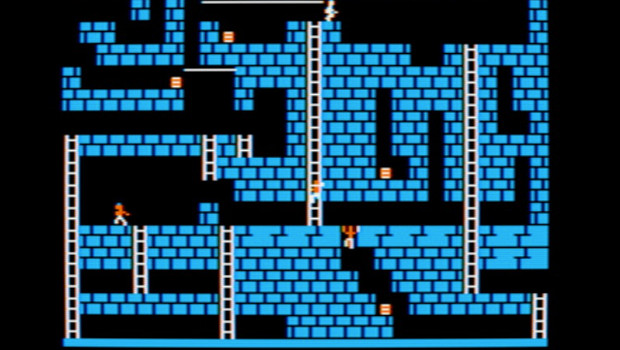
Developer: Doug Smith
Released: 1984
It was generally the text-based adventurers that made the transition from the minicomputer platforms of the '70s to the home computers of the '80s, but Lode Runner is an honourable exception. Bizarrely, architecture student Douglas Smith originally coded his ladders-and-levels chase game for the VAX system, before rebuilding it and refining it for the Apple II. Though maddeningly addictive in its own right, much of the game's popularity and enduring appeal can be attributed to inclusion of more than a hundred levels, along with an editor enabling gamers to fashion countless more. Lode Runner even transitioned to the arcades, while variants continue to thrive to this day.
44. Star Raiders
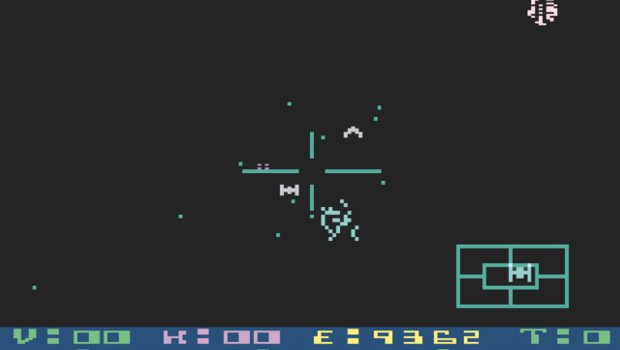
Developer: Atari
Released: 1980
Granted, the first iteration of Star Raiders hit shelves at the tail end of the '70s, but its subsequent appearance on other Atari formats at the start of the following decade legitimises its inclusion here; indeed the 5200 version is arguably the superior, thanks to that console's analog controller. With its fast-moving starfields, deep space dogfights and hyperspace effects, it's little wonder a world in thrall to Star Wars fell so deeply in love with this game. Although preceded by one or two space-based 3D coin-ops, Atari's Star Raiders is the game that laid down the blueprint for a space opera genre that would later be inhabited by Elite, Wing Commander, the X-Wing Vs Tie Fighter games, and Egosoft's X series.
43. The Sentinel
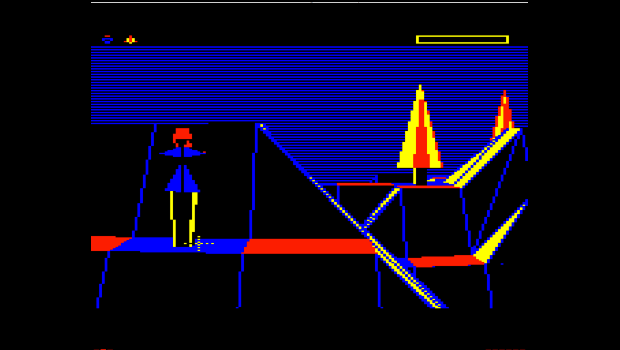
Developer: Geoff Crammond
Released: 1986
Sir Geoff Crammond spent much of the '90s placed on a pedestal in recognition of his Formula One racing simulations, but for the more cerebrally inclined it was his earlier, weird and wonderful foray into puzzle-based games that inspired real devotion. It's hard to fathom how Crammond actually conceived such an odd blend
- the chess-style powerplays, energy absorption , and virtual reality-style, procedurally generated 3D chequerboard landscapes - but for whatever reason it worked (and still works) beautifully. Crammond gave his blessing to an official remake from Psygnosis just over a decade later.
42. Lords Of Midnight
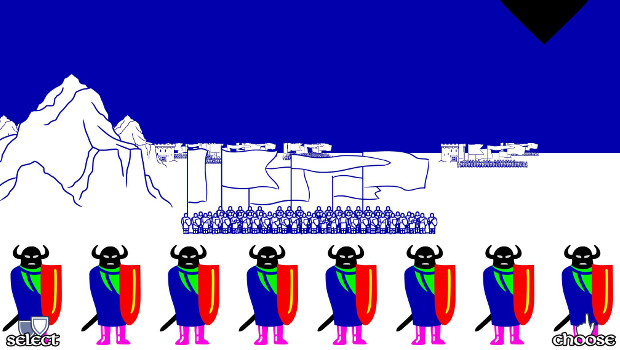
Developer: Mike Singleton
Released: 1984
Released at a time when other games might offer ten, twenty, or gasp even a hundred locations to explore, Lords Of Midnight's canny ability to somehow squeeze almost 4,000 into a mere 48K of memory was nothing short of incredible, and the ability to view each of these from multiple angles, and in 3D, was pretty much revolutionary. Somewhat shockingly, Lords Of Midnight creator Mike Singleton also appreciated that size isn't everything, and so the vast, Tolkien-indebted game world merely served as the backdrop for a mammoth turns-based blend of role-playing, wargaming and strategy. Even today, game developers struggle to combine so many game strands so seamlessly or conjure up such a fully formed fantasy world.
41. Pinball Construction Set
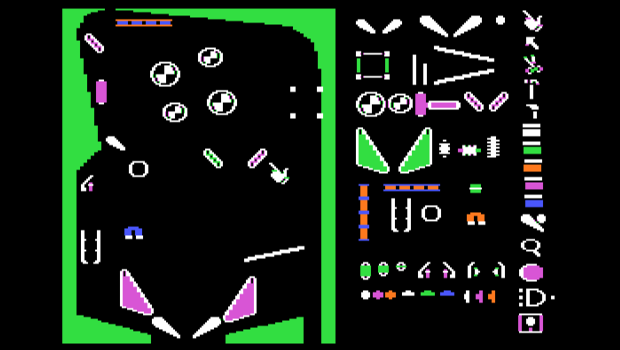
Developer: BudgeCo
Released: 1982
Having already introduced the very first pinball simulation to the Apple II format with Raster Blaster, PhD student Bill Budge inadvertently stumbled upon fame, a degree of fortune, and the honour of inventing a whole new kind of computer game, with the creation of this follow-up. With the ability to drop pinball table components onto a blank canvas and even modify the physics governing ball behaviour, players were effectively handed a game of infinite possibilities. Electronic Arts, who snapped up publishing rights, went on to sell almost a third of a million copies and further develop the idea with a number of other Construction spin-offs. Budge's game also made a belated appearance on the Genesis platform in the '90s, under the name Virtual Pinball.
40. Emlyn Hughes International Soccer
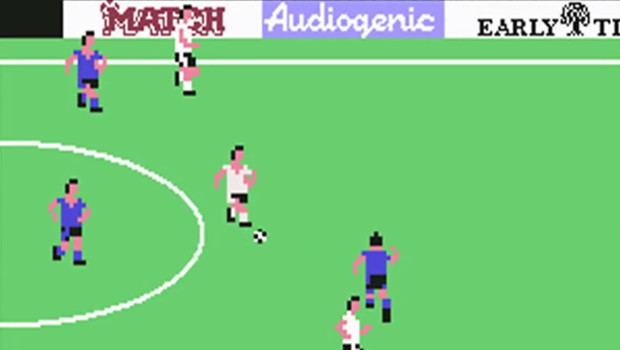
Developer: Audiogenic Software
Released: 1988
Computer games bearing endorsements from sports personalities were given a wide berth by those in the know in the '80s, the licence generally being used as a way to sell subpar software to an easily swayed older generation out shopping for their children or grandchildren. This one was a little different. Taking inspiration in both name and game style from Commodore's highly lauded 1983 offering, International Soccer, this classic beat the competition through a combination of fancy footwork, skilful integration of complex moves like headers, barges, and even back heels, and even some basic management features. Rival title Kick off often grabbed the headlines, but it was Emlyn's offering that truly captured the magic of the sport.
39. Ballblazer
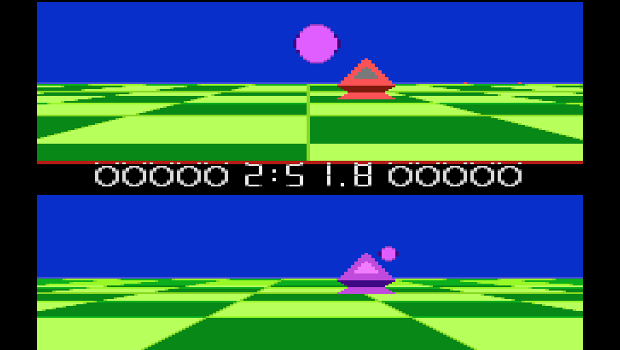
Developer: Lucasfilm Games
Released: 1985
Hailed by many as the very first futuresports video game, Ballblazer was one of two launch titles for LucasFilm Games (the other being Rescue On Fractalus). Its arrival immediately established the developer as a purveyor of original, highly polished content, with the game's unique combination of air hockey, one-on-one soccer, and first-person, split-screen action proving so simple yet effective that many doubtless assumed it had originally been conceived as a coin-op. Indeed, two remakes attest to the enduring appeal of the concept. Curiously this was another LucasFilm game to make use of fractal mathematics - this time in the service of a bizarre, improvised jazz soundtrack. Groovy.
38. Thrust
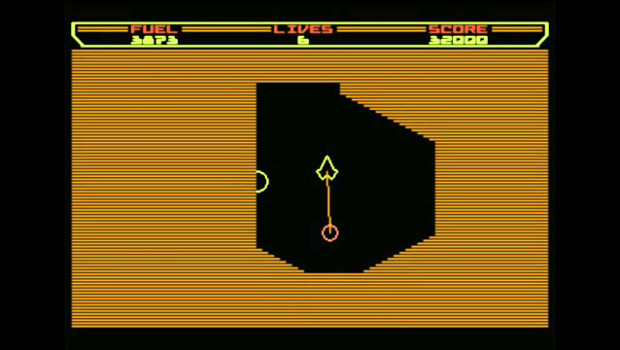
Developer: Jeremy C. Smith
Released: 1986
Rare is the home computer game that takes its cue from a coin-op without coming across like a pale imitation. Yet, while clearly riffing on gameplay mechanics first floated by Atari's Gravitar, Thrust was hailed not as a cheap cash-in but rather as a genuine improvement over the original. Piloting a craft through caves using the same rotate-and-thrust system from Asteroids, players not only had to deal with enemy fire, but also contend with the eternal pull of gravity, and the complexities of inertia that arise once pods are picked up using a tractor beam. Who knew physics could be such fun?
37. Out Run
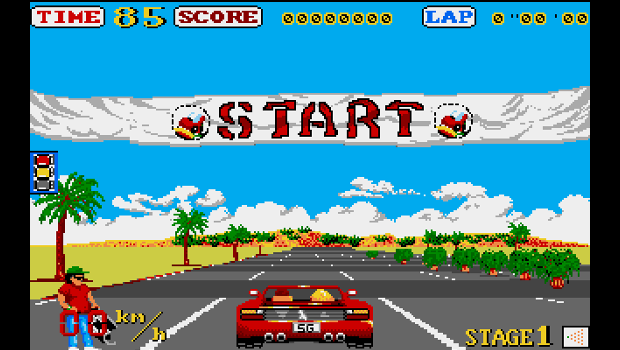
Developer: Sega
Released: 1986
Age may have withered its charms, but Out Run's place in history should not be forgotten. This was arguably the first coin-op to deliver a real sense of high-speed, against-the-clock road racing, largely thanks to the power of Sega's own sprite-based 3D graphics hardware (also used to great effect on After Burner, Space Harrier, and Power Drift), and in part due to the shiny allure of a real steering wheel and even a vibrating sit-down cabinet version. Also innovative was the game's use of music, with a selection of smooth numbers emulating a suitably beach-kissed radio station. Some home versions even included an audio tape featuring recordings of the original tunes, for enhanced sensory gaming pleasure.
36. Missile Command
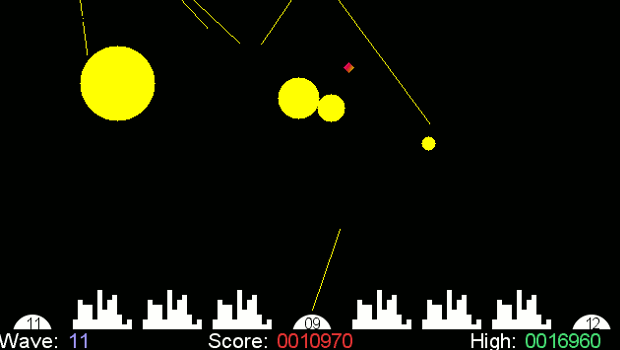
Developer: Atari
Released: 1980
Maybe it was the Cold War, but whatever the reason, gamers in the late '70s and early '80s couldn't get enough of video games where destruction rained from the skies and defeat was always one warhead away. Conceptually similar to Space Invaders and Centipede, though practically a world away thanks in part to the use of a trackball controller, Missile Command proved so popular in arcades that it continued to draw crowds well into the '90s. It was also one of the few early coin-ops to benefit from relatively loyal translation by console programmers, no doubt largely thanks to the beautiful simplicity of both the concept and the graphics.
35. Dragontorc
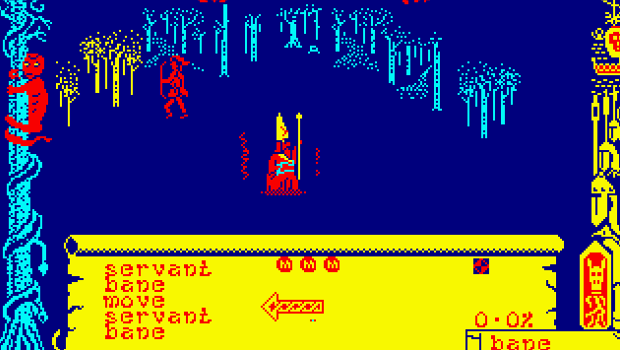
Developer: Graftgold
Released: 1985
We make no apologies for the inclusion of such an obscure title on a UK-centric format, or indeed its high ranking. Graftgold's Steve Turner was pretty much responsible for the first truly convincing action/RPG gene-splice with 3D adventure movie Avalon, yet somehow few actually noticed. Predictably the same thing happened with this superior sequel, despite the game's confident ability to put spellcasting, exploration and puzzle-solving within a real-time arcade context, without compromising either depth of story or accessibility. Genius.
34. Archon: The Light and the Dark
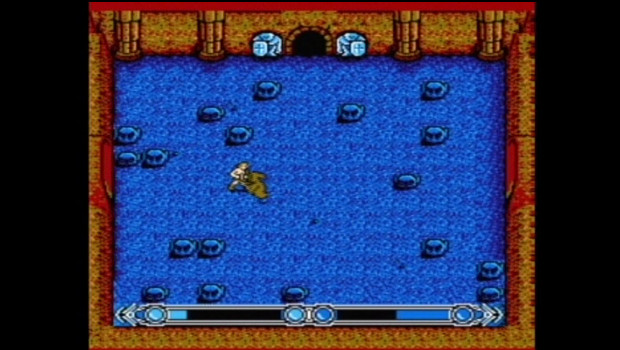
Developer: Free Fall Associates
Released: 1983
The more cynical might suggest the reason Archon exhibits such classic gameplay is that it borrows so liberally from the game of chess. Its fans, however, prefer to think of it as standing on the shoulders of giants. Though the action does indeed all take place on a familiar chequerboard, and while the various pieces move around in a rather familiar fashion, it is unlikely Kasparav and his cohorts ever had to deal with an additional combat arena, spellcasting, power points on the chequer board, and a distinction between ground-based and airborne pieces. Even today Archon feels at once reassuringly familiar and excitingly fresh.
33. World Class Leaderboard

Developer: Access Software
Released: 1987
Long before Electronic Arts enlisted Tiger Woods to help in their plan for world domination of yet another sports simulation genre, golf fans got their leisurely kicks with the Links series. And prior to developing that winning franchise, American outfit Access first swung out with the Leaderboard games. The last in the series, World Class Leaderboard refined the wind/snap/power balance of earlier games, as well as mixing up fantasy courses with decent renditions of real fairways. PC owners were even treated to an early use of audio sampling, with a process dubbed RealSound adding interactive commentary to the proceedings.
32. Zork

Developer: Infocom
Released: 1980
In the beginning was the word, in the form of the text-based Colossal Cave Adventure. And then just after the beginning there was Zork. Like its predecessor, Zork was developed for the PDP-10 mini-computer system in the late '70s, but crucially its developers quickly recognised the commercial potential for their creation, and set about reworking their creation as a trilogy of adventure games for home computer formats under the Infocom development banner. Boasting cunning puzzles and an ambitious text input system, Zork was to prove highly influential, also giving Infocom an foundation on which to build a whole series of interactive fiction titles.
31. Star Wars
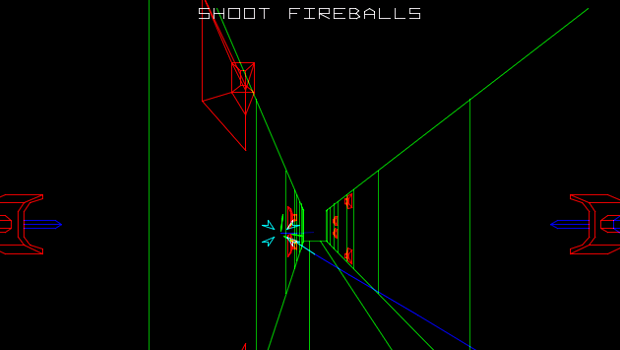
Developer: Atari
Released: 1983
Those who remember the '80s as a period littered with cynical computer games spin-offs of movies and TV shows would do well to remember Atari's Star Wars coin-op. This was clearly a labour of love for designer Mike Halley, who took his cue from the climactic Death Star battle scenes in the first of the sci-fi trilogy. Although rendered using a colour vector graphics display, the game does a fine job of bringing iconic shapes like the X-Wings and Tie Fighters to life, while voice samples from the original movie lend extra gravitas. Many of the home computer editions were actually coded by Vector Grafix, a company ideally suited to the job, having already ripped off the entire concept so successfully with its own Star Strike title.
30. Exile
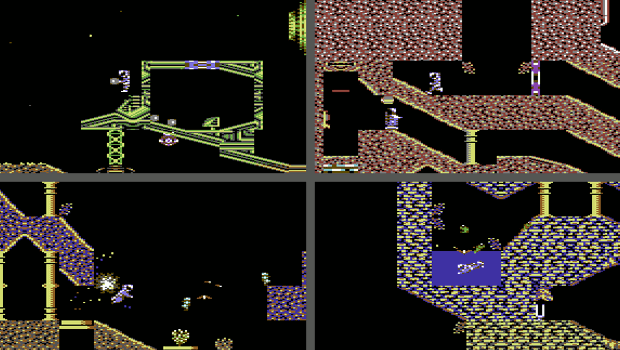
Developer: Superior Software
Released: 1988
Any game that dares implement a physics-based control system inevitably risks alienating a large section of the gaming community, despite the fact that such a move invariably adds enormously to the subtly of the gameplay (see also Lunar Lander, Asteroids, Defender, Lunar Jetman, and so on). Exile is no exception. With the interplay between gravity, natural phenomena like fire and water, plus a protagonist equipped with a jetpack, Exile immediately presented players with a fairly steep learning curve, before further complicating matters with massive pseudo-random levels, uncommonly intelligent enemies, and a bewildering array of useful objects. Scary stuff, but Exile may just be the most ambitious title to emerge from those golden years of gaming.
29. International Karate+
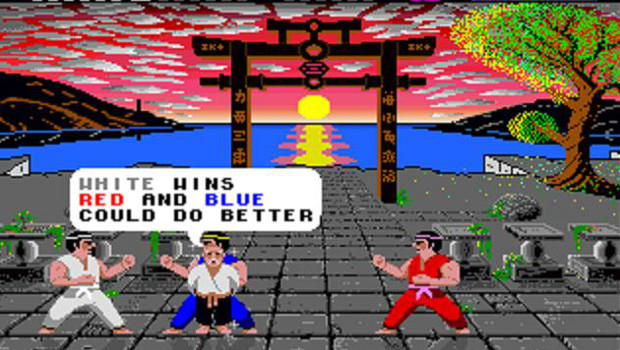
Developer: System 3
Released: 1987
Though Data East's Karate Champ was the game that first introduced many to the mighty beat-em-up, the finest martial arts thrills to be had in the '80s were actually those coded by bedroom programmers. First came The Way Of The Exploding Fist from Melbourne House, followed by Archer Maclean's International Karate (also known as World Karate Championship), a game that almost prompted a lawsuit from Melbourne House and in fact did lead to a legal battle with Data East. When this failed, the maverick coder was free to further polish the already gleaming format with IK+, improving the fight mechanics, adding two-on-one battles, and sneaking in all manner of easter eggs.
28. Ms. Pac-Man
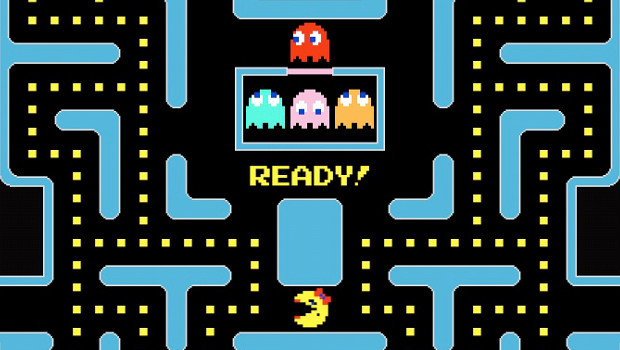
Developer: General Computer Corporation
Released: 1982
Having transformed expectations about the demographic coin-op games could attract with their US launch of Namco's Pac-Man, Midway decided to target the female gaming market a little more blatantly with this sequel, creating one of the most popular arcade games of all time in the process. Initially released without permission from Namco, Ms. Pac-Man featured near-identical gameplay to its predecessor, but adds longevity via the inclusion of five mazes and more random ghost behaviours, and considerable charm via pastel colour schemes and suitably themed cut-scenes. The original home computer and console versions also add various features, such as a simultaneous two-player mode, though whether any of these actually improved the formula remains questionable.
27. Lunar Jetman

Developer: Tim and Chris Stamper
Released: 1983
Scoff at the limited colour palette by all means (as per all games for the ZX Spectrum), but there's no denying the genius of the Stamper brothers' sequel to their own Joust-inspired Jet Pac. Greatly expanding the gravity-enhanced gameplay of the original, Lunar Jetman adds smooth scrolling, in-vehicle travel, meteorites, multiple waves of aliens, and a series of pesky craters that must be filled in order to access the enemy missile base at the end of each level: all pretty advanced stuff for 1983. Jetman sadly only made one more game appearance (on the NES in 1990), but then the Stampers were somewhat preoccupied with the creation of a multi-million dollar gaming empire.
26. Mega Man 2
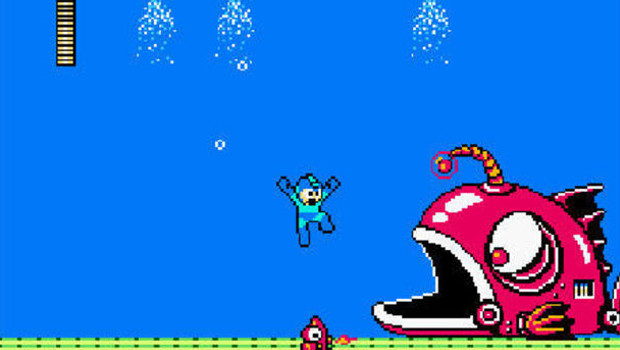
Developer: Capcom
Released: 1988
By no means the fanciest or most innovative title in this top 50 (or even within the Mega Man Classic franchise), the second game starring the eponymous boy robot is nevertheless the one that warrants inclusion in the Top 50, simply because it's such a perfectly formed Japanese gem. Even today the ridiculously simple visuals and audio somehow retain an iconic feel, while the platform-based action continues to hook mobile gamers. The Mega Man character, meanwhile, lives on a newer generation of titles and as Capcom's official mascot.
25. Ikari Warriors
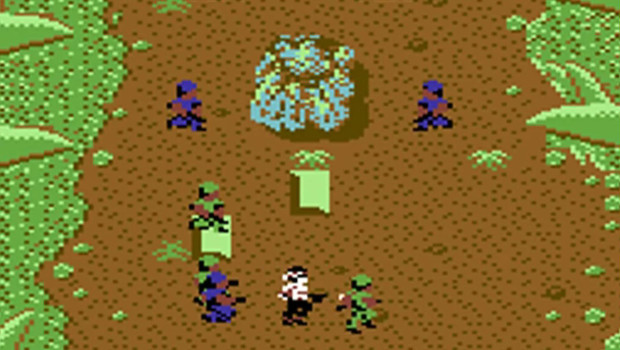
Developer: SNK
Released: 1986
You couldn't move for bulging biceps, sweaty headbands and pithy putdowns in the mid-'80s. And with Schwarzenegger's Commando and Stallone's Rambo ripping up the flesh in cinemas, it didn't take long for arcade game designers to get in on the act. Capcom/Data East's Commando (no relation) was the first out of boot camp and ultimately proved best suited to home computer and console treatment. But in the arcades it was SNKs Ikari Warriors that triumphed, simply by upping the body count through the inclusion of a wildly enjoyable simultaneous two-player mode and guns... lots of guns.
24. Ant Attack
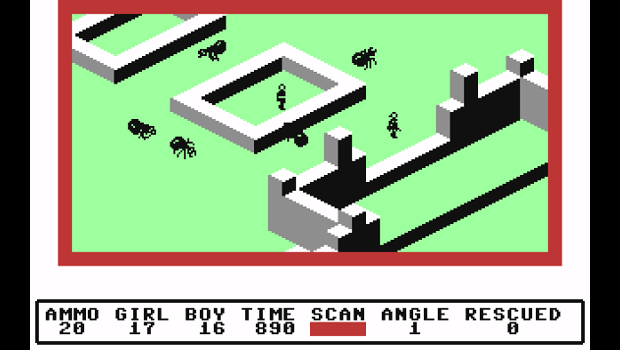
Developer: Sandy White
Released: 1983
Probably the world's first isometric 3D home computer game (and this at a time when few coin-ops dared to toy with such an ambitious graphical technique), Ant Attack remains a game sadly known to few US-based gamers by dint of its initial appearance on the Sinclair ZX Spectrum. A shame, as author Sandy White's revolutionary Softsolid 3D technique was put to great use in a game populated with giant ants, grenades, and equal opportunities: players either had to rescue a man or woman depending on the gender theyd chosen for their own hero character.
23. Koronis Rift
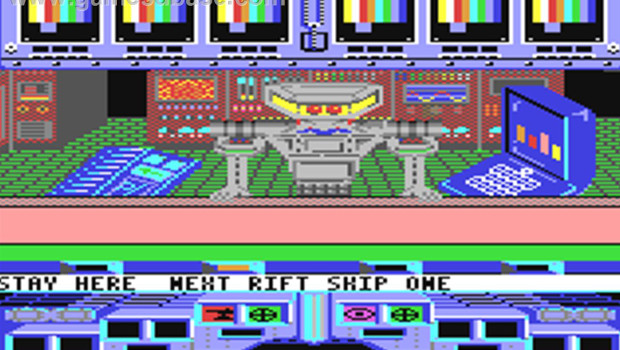
Developer: Lucasfilm Games
Released: 1985
Having initially showcased their fuzzy 3D landscape technique with Rescue On Fractalus, Noah Falstein and his LucasFilm team then proceeded to show how well the cutting edge technique could be twinned with equally ambitious gameplay mechanics, with The Eidolon and Koronis Rift. Although afforded less of the limelight, it was the latter game that really pushed the boundaries, casting gamers in the role of a scavenger of planet surface scrap. No other game at the time boasted such immersive environments, or such an ambitious blending of blasting, inventory building, and exploration.
22. Final Fantasy
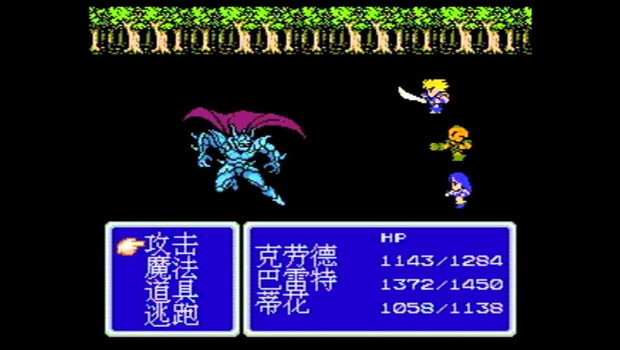
Developer: Square
Released: 1987
Nobody does epic role-playing quite like the Japanese, and no Japanese company does it quite like Square. So named because designer Hironobu Sakaguchi planned to retire after its completion, Final Fantasy was the game that brought Square back from the brink, while simultaneously established the NES system as the must-have system for role-playing fans. In truth the game lacked much in the way of innovation, but Hironobu's knack for storytelling elevated the game to another plane altogether and kickstarted a franchise that now spans multiple sequels (with more than 80 million games sold to date), numerous printed spin-offs, and even two full-length CG animated movies.
21. Uridium (1986)
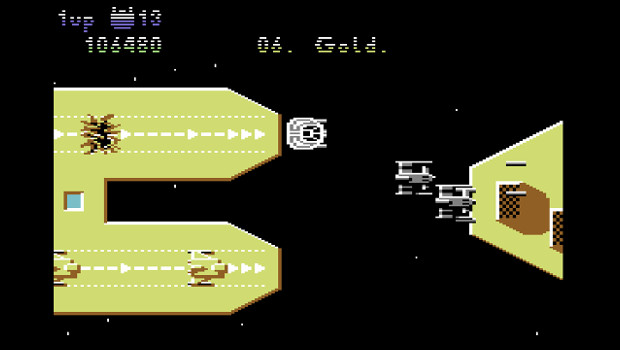
On a roll after the success of Rainbow Islands and Paradroid, Andrew Braybrook took his signature bas relief graphical style into space for a game that, while an original C64-based creation, bore all the hallmarks of a pitch-perfect coin-op shoot-em-up. Multi-speed scrolling, a unique parallax effect, and gameplay inspired by classics including Defender, Zaxxon and R-Type, blended into something far exceeding the sum of these disparate parts. Uridium was later recycled by Mindscape, who rebadged with an official licence from sci-fi movie The Last Starfighter.
20. R-Type
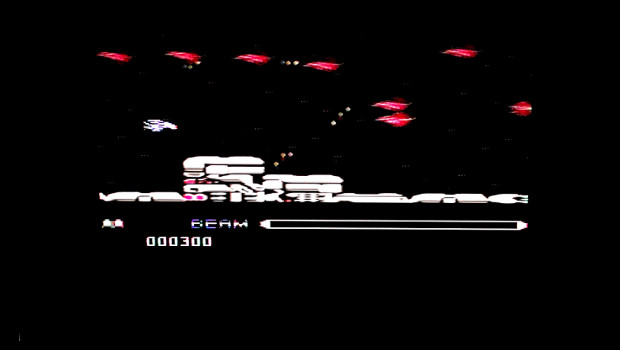
Developer: Irem
Released: 1987
Arguably the definitive sideways scrolling shooter of the '80s, Irem's R-Type is a game far more innovative and subtle than its basic premise suggests. Chief among its USPs was the way firepower could be accrued, not least through an advanced power-up system dubbed The Force. A living weapon, The Force trails the players craft until fired off in a specified direction using one fire button, with the collection of extra power-ups further increasing its destructive capabilities. Throw in a Zaxxon-like approach to level design (the correct pathways must be learned through repeated playing) and no small number of end-of-level bosses, and the result was a game strong enough to inspire several sequels and influence shoot-em-ups games all stripes.
19. Boulder Dash
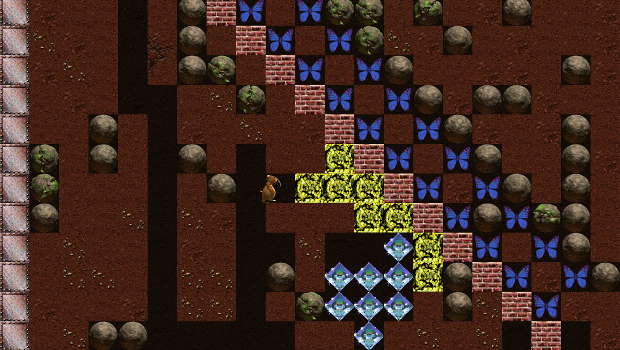
Developer: Data East
Released: 1984
Straightjacketed by the graphical limitations of the day, Peter Liepa and Chris Gray clearly channelled all their energies into the game design of Boulder Dash instead, concocting something that, while not exactly original (see Dig Dug), worked beautifully. In fact their game of tunnel digging, falling rocks and gem collection proved strong enough to attract the interest of coin-op manufacturers including Exidy and Data East. Incredibly, fan clubs, tribute versions, and new level designs still thrive on the web.
18. Robotron: 2084
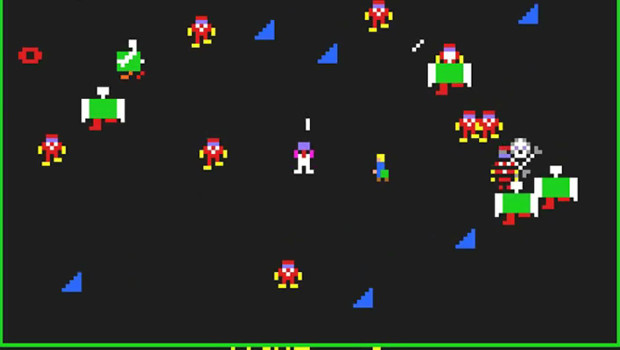
Developer: Vid Kidz
Released: 1982
A spiritual brother to equally frenetic coin-ops Tempest and Defender, Eugene Jarvis' Robotron 2084 is incredibly viewed as more challenging than either of those pant-wettingly difficult games thanks to a then-unique twin joystick control system. Challenging gamers to get to grips with the notion of moving a lead character with one stick and firing independently with the other, and then throwing them into a robot-infested arena reminiscent of Berzerk and even Asteroids for good measure, Robotron was never going to be a game to enjoy mainstream appeal. More's the pity, as the learning curve was never quite as bad as it first appeared. Ultraviolence has rarely been so simple yet profoundly satisfying.
17. Rainbow Islands
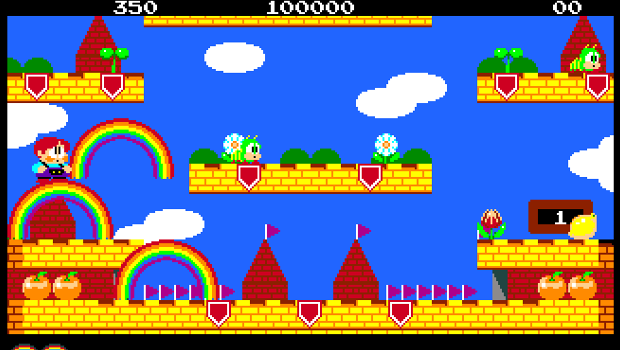
Developer: Tatio
Released: 1987
Though Taito's Bubble Bobble sequel undoubtedly enjoyed much success in arcades, it was Rainbow Islands' arrival in the home that catapulted it into the public consciousness. Much of the credit must go to UK development team Graftgold, which worked to produce near-perfect versions on a whole range of formats, the 1990 Amiga edition being regarded as the finest, despite the absence of the arcade game's final levels (it held the number one position in Amiga Power's highly influential All Time Top 100 list for several years). Rainbow Islands' colourful platform-based action retains enormous charm, and continues to find and gain new fans with additional versions periodically arriving on contemporary formats.
16. Metroid
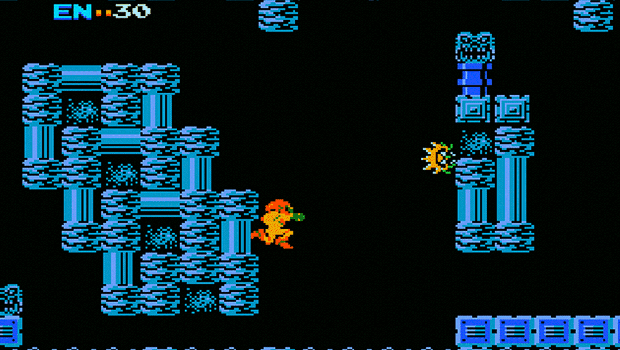
Developer: Nintendo
Released: 1986
Forget the famous reveal at the end of Metroid, it's the non-linear sprite-based alien blasting that ensures its place in the gaming hall of fame. And yet the game that spawned one of Nintendo's most-treasured franchises wasn't even a great success when originally launched for the NES disk system add-on in Japan. It was only when the game was given a cartridge format release in the USA (perversely on the same day as Legend Of Zelda) that the game really began to resonate. Comic strips and more ambitious console sequels helped Samus become one of the best-known game characters of all time.
15. Paradroid
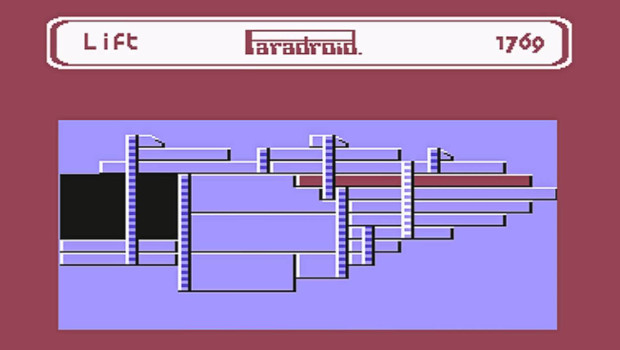
Developer: Graftgold
Released: 1985
The game that launched a thousand titles sporting bas relief visuals, Andrew Braybrook's Paradroid may well be the finest original title ever developed for the Commodore 64 computer. Superficially a basic corridor-based shoot-em-up, the game is built around a finely wrought power struggle mechanism, with players taking control of a lowly droid and battling to rise through the ranks, gaining power and wiping out every enemy in the process either by blasting them or transferring control to their body. Quite why more contemporary games designers haven't taken inspiration from, or even simply ripped off, the near perfect Paradoid remains a mystery.
14. Contra
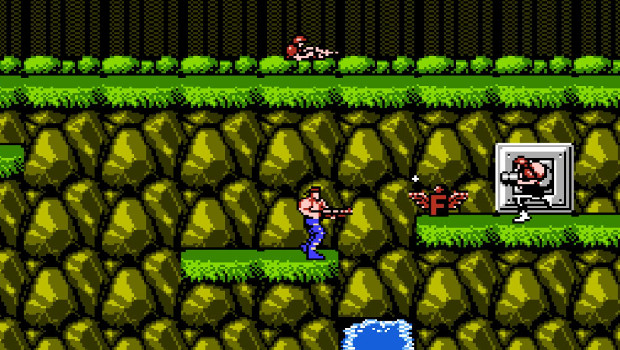
Developer: Konami
Released: 1987
Contra, Gryzor, Probotector call it what you like. The fact remains that Konami's coin-op and numerous home computer and console spin-offs set the bar for run-and-gun gaming in the late '80s, not least due to a co-operative two player mode, daring use of two different game styles (sideways scrolling and third-person perspective), and blatant appropriation of the gung-ho themes explored in genre movies like Rambo, Aliens, and Predator. Contra remains one of the most fondly remembered actioneers of the era by old-school gamers. Hell, even the soundtrack is considered a classic.
13. The Legend Of Zelda
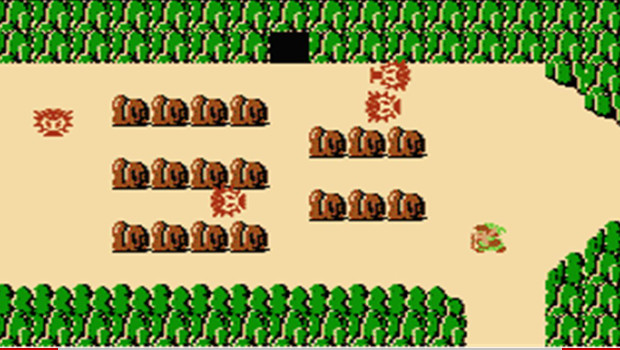
Developer: Nintendo
Released: 1986
Sure it's quaint, even primitive by today's standards, but The Legend Of Zelda was never about the sensory experience. Its success can instead be attributed to Shigeru Miyamoto's unparalleled knack for combining rich characterisation, narrative, and joyous adventuring. Indeed it's these qualities that led to both Japanese and American audiences embracing Link's debut adventure so readily, spawning a multi-million selling franchise, leading to a cartoon series, and helping to cement Nintendo's reputation as the home of the role-playing game. And Zelda? Miyamoto bizarrely named the character after author F Scott Fitzgerald's wife.
12. The Hobbit
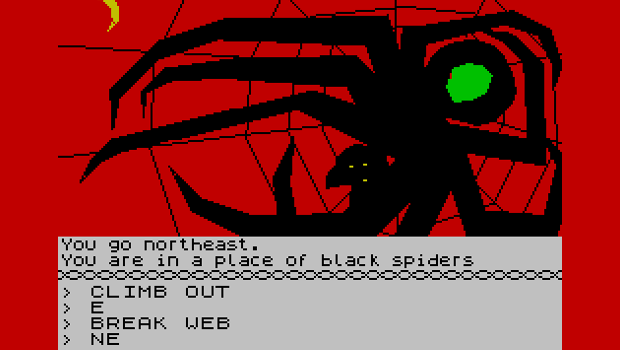
Developer: Beam Software
Released: 1982
In a time when even movie spin-offs were a rarity, an officially licensed game based on a literary classic seemed nigh-on revolutionary. Throw in lavish packaging that included a copy of the original book, and it's little wonder The Hobbit caused such a sensation. Incredibly, Melbourne House invested just as much time developing the game itself as snagging that coveted licence. Closely following Tolkien's original story, throwing in some handsome static visuals, and boasting an advanced input system dubbed Inglish, The Hobbit sold millions and gave tens of thousands their very first taste of text-based adventuring.
11. Ultima 4: Quest Of The Avatar
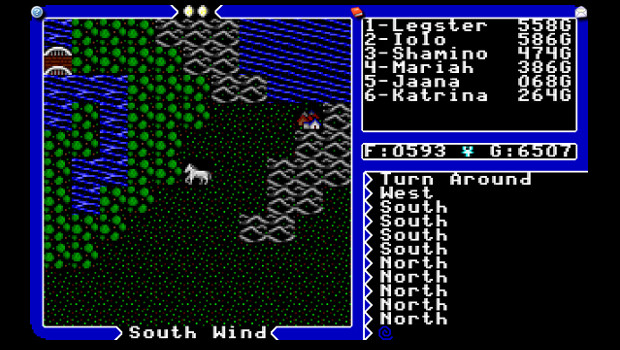
Developer: Origin Systems
Released: 1985
Undoubtedly one of the industry's more interesting larger than life characters, games designer, programmer, and budding astronaut Richard Garriott is one man who has always embraced the inner geek. Not content with simply updating the simple pleasures of the first three Ultima games, Garriott bravely chose to take things even further with the fourth in the series. Sending players on a quest to display proficiency in eight noble virtues and became a mythical saviour, Quest Of The Avatar added a whole new philosophical and moral edge to the hack and slash genre, and laid the groundwork for a series based in the land of Britannia that eventually spilled over into the groundbreaking MMORPG Ultima Online.
10. Dungeon Master
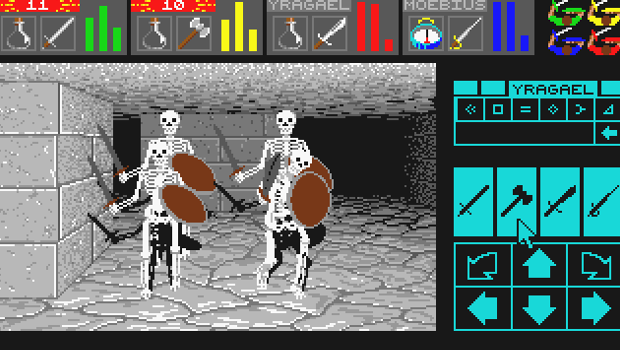
Developer: FTL Games
Released: 1987
Wizardry and The Bards Tale may have been the first to successfully twin Dungeons & Dragons-inspired adventuring with 3D visuals, but it was Dungeon Master that finally brought the genre firmly into the mainstream. Dodgy genre staples like orcs, magical arm and hit points are all present and correct, but with its mouse driven interface and revolutionary use of real-time exploration and combat, Dungeon Master proved accessible enough to become the most popular game ever released on the Atari ST, and a heavy influence on Eye Of The Beholder, Might & Magic, and the highly revered Ultima Underworld.
9. Maniac Mansion
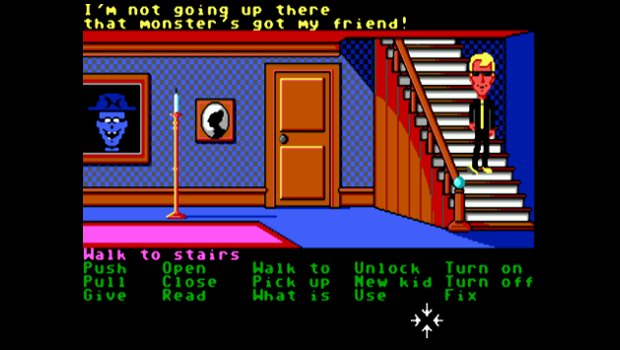
Developer: LucasFilm Games
Released: 1987
It's easy to forget just how quickly the adventure game genre evolved during the '80s. At the start of the decade the very idea of including graphics seemed outlandish. Indeed, Zork and other groundbreaking early efforts from Infocom managed fine without them. Taking a cue from The Hobbit and the Sierra-On-Line graphic adventures, LucasFilm Games took a first dip into adventuring with Labyrinth before further developing its craft on the landmark Maniac Mansion. Featuring multiple protagonists, in-jokes galore, several possible endings and the innovative SCUMM scripting system, it laid down the blueprint for the Monkey Island games, Sam & Max, Grim Fandango, and a dozen other classics.
8. Prince Of Persia
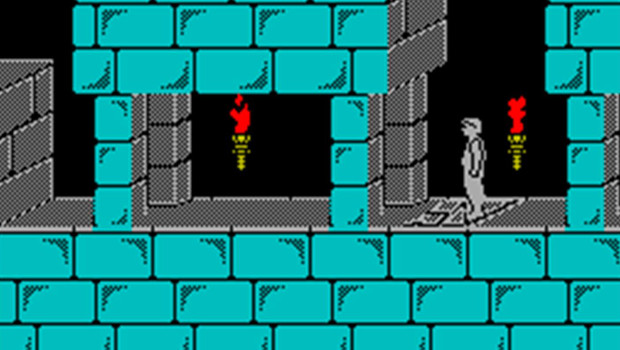
Developer: Broderbund
Released: 1989
Having already made a name for himself with 1984's karate title Karateka, Jordan Mechner returned to close combat with his sophomore Apple II effort, this time swapping the fist for the blade and amping up the graphic fidelity through the use of rotoscoping. Its doubtful that Mechner was the first person to use live footage for reference when punching in pixel data, but at the time nobody had created such meticulously natural-looking animation in a humble computer game. Sadly Mechner only ever coded two further titles, although he did serve as a consultant on 2003's Prince Of Persia: The Sands Of Time.
7. Sim City
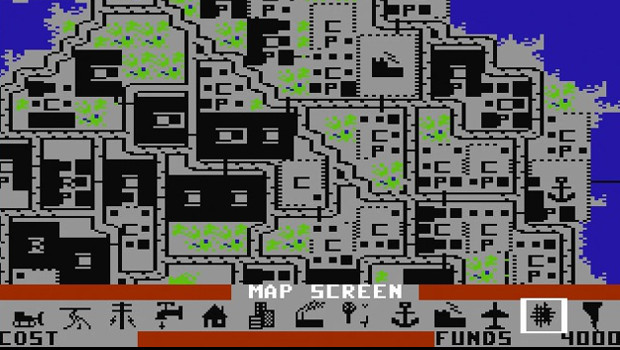
Developer: Maxis
Released: 1989
Few game design legends have had to fight so hard for success as Will Wright, but it's the fact that he struggled for four whole years to get this seminal title published that really beggars belief. Initially inspired by the map toolkit in his game Raid On Bungeling Bay, Wright originally coded Micropolis in 1985, but faced rejections from all the major publishers, until new outfit Maxis finally agreed to bring it to market. Ironically, it's the very features that were deemed commercial poison (no way to win the game, no set objective, and no right and wrong way of doing things), that made Sim City such a milestone title and so resoundingly popular.
6. Defender
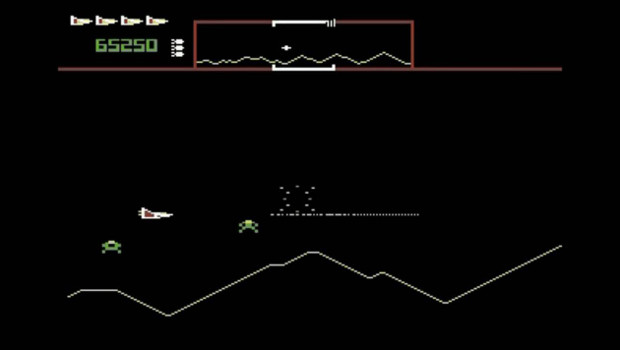
Developer: Williams Electronics
Released: 1981
With its daunting array of controllers (five buttons and a joystick), a range of bad guys sporting complex behaviours, plus a weird control system drenched in inertia, it's little wonder that so many chose to admire Defender from afar when it first arrived in arcades. Even today, Eugene Jarvis' uniquely challenging creation for Williams remains one of the most difficult-to-master video games ever conceived. Yet it's also one of the most elegant and inspired narrative-and-character-free coin-ops ever created. While several Defender games finally made it to consoles and home computers, only the unofficial BBC version Planetoid really came close to recreating the finely tuned gameplay of the arcade original.
5. Donkey Kong

Developer: Nintendo
Released: 1981
The fact that it pretty much invented the single-screen platform genre (while simultaneously helping Nintendo to break the American market) is reason enough to justify a top ten rating for Donkey Kong. But what really seals the deal is that it still remains one the most recognised and fondly remembered coin-ops of the day. Starring the eponymous ape and Jumpman, later to be renamed Mario, the game was the work of veteran Nintendo engineer Gunpei Yokoi and a first-time designer by the name of Shigeru Miyamoto. Talented guy. We think he'll go far.
4. Tempest
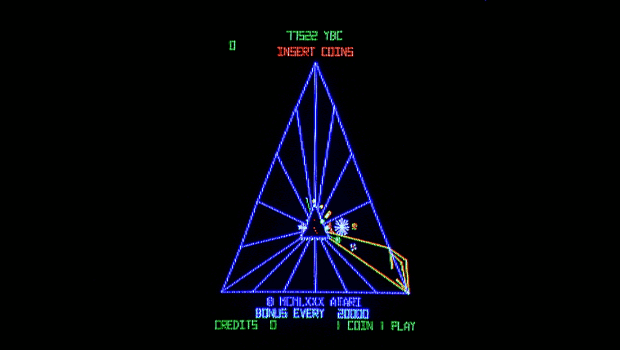
Developer: Atari
Released: 1981
Created at Atari by Missile Command author David Theurer, Tempest was, much like Defender, often viewed with suspicion by many arcade fans in the '80s. With an unfamiliar control system, an insanely steep difficulty curve, and those abstract vector graphics, its easy to understand why. And yet these are the very things that continue to endear it to the hardcore gaming fraternity, and have even prompted a 21st century re-evaluation that's led to a spate of games sporting Tempest/Tron-indebted line art. Tempest remains both beautifully simple and simply beautiful.
3. Super Mario Bros 3
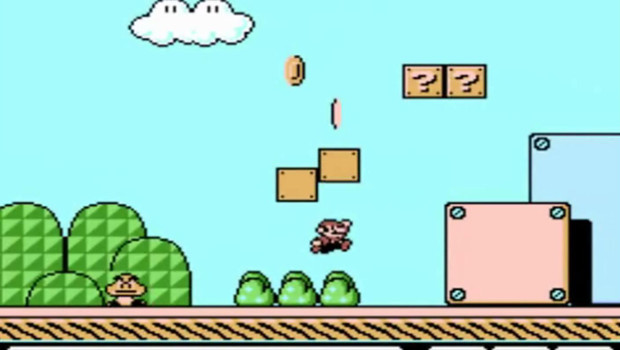
Developer: Nintendo
Released: 1989
Who at the time would have guessed that it would be the plumber, rather than the ape, that would emerge from Donkey Kong to become the official Nintendo mascot? While it was the original Super Mario Bros. that introduced a groundbreaking platform-based action adventure formula, it was the third in the series that really turned the moustachioed one into a fully-fledged superstar. Evolving the format with the addition of minigames, map screens, and a range of now-familiar power-ups and environment designs, Super Mario 3 went on to sell over 18 million copies in its original NES format, before going on to enjoy SNES success in the '90s.
2. Tetris
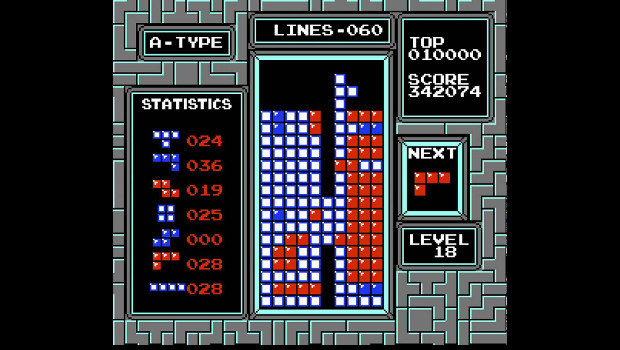
Developer: Alexey Pajitnovs
Released: 1985
Smartarse pundits may have initially compared Alexey Pajitnovs maddeningly addictive falling blocks puzzler to the Rubik's Cube, but Tetris has ultimately proved to have far greater longevity, despite the fact that it's been the subject of more (and more ridiculous) legal battles than just about any other leisure product of the last hundred years. Originally developed at the Academy of Science in Moscow for the Elektronika 60, the game that most famously helped Nintendo turn the Gameboy into a multi-million seller has since been released on just about every computer, console and portable format imaginable, including the iPod.
1. Elite
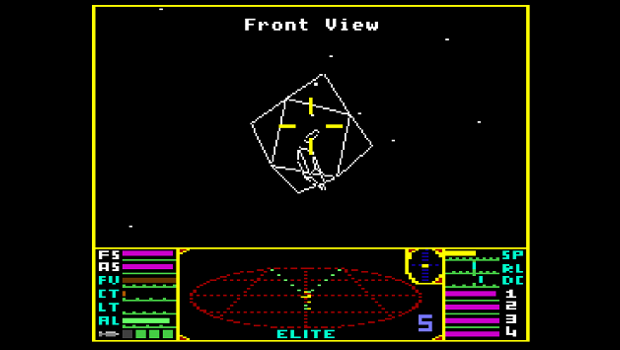
Developer: Dave Braben / Ian Bell
Released: 1984
Sacrilege? Heresy? Lunacy? All of the above? A lack of commercial success in the USA means many sadly never got the opportunity to appreciate Dave Braben and Ian Bell's masterwork, so will doubtless view its top ranking in disbelief. But those lucky enough to experience the wireframe thrills back in the day know that nothing else came close to providing such an immersive, one-more-hit, all-consuming experience. Blending complex physics, trading elements, and plenty of Star Wars indebted shoot-em-up action, and framing the action in an open-ended universe, Elite is the spiritual predecessor of everything from Wing Commander through to the Grand Theft Auto series. Elite at number one? Damn right.







